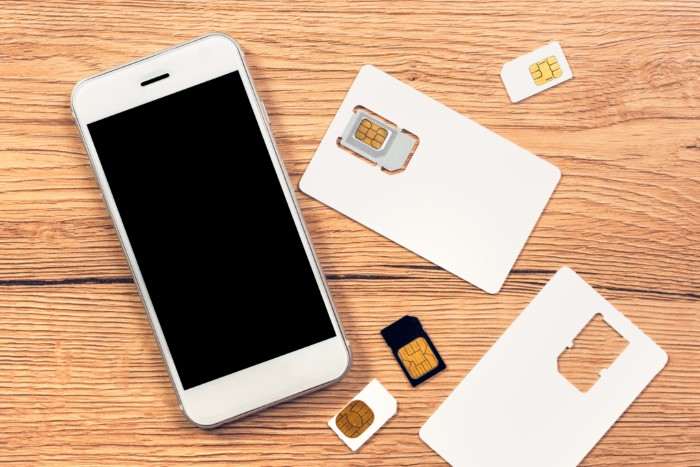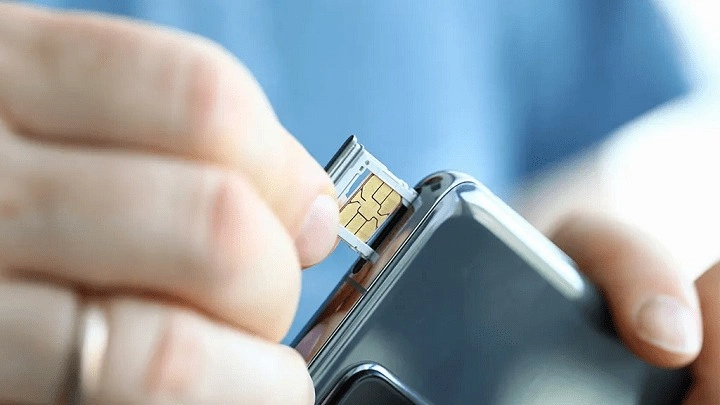In this comprehensive guide, we’ll walk you through the process of safely removing the SIM card from any Android device. We’ll also cover the different types of SIM cards, explain what to do if your phone doesn’t have a removable battery, and share some troubleshooting tips. Let’s get started!
Table of Contents
ToggleUnderstanding SIM Cards: Types and Their Importance

Before diving into the removal process, it’s essential to understand the types of SIM cards used in modern smartphones.
What is a SIM Card?
A SIM card, short for Subscriber Identity Module, is a small card inserted into your phone to connect it to a mobile network. It contains your unique phone number, carrier information, and contact data. Without a SIM card, your Android phone cannot make calls or access mobile networks.
Types of SIM Cards
Over the years, SIM cards have evolved in size, and different devices may use different types of SIM cards. Here’s a quick overview of the types:
- Standard SIM: The original and largest type of SIM card, rarely used in modern smartphones.
- Micro SIM: Smaller than the standard SIM, the Micro SIM was common in older smartphones.
- Nano SIM: The smallest SIM card type, most current Android devices use Nano SIMs due to their compact size.
- eSIM: An embedded SIM that’s built into the phone. It’s activated digitally and doesn’t require physical removal.
Why Remove the SIM Card?
There are several reasons why you may want to remove the SIM card from your Android device, including:
- Switching to a new phone: When upgrading to a new device, you’ll need to transfer your SIM card to continue using your existing mobile number.
- Changing carriers: If you’re moving to a new mobile provider, removing the old SIM card is necessary before inserting the new one.
- Troubleshooting connectivity: If you’re experiencing issues with making calls or using mobile data, removing and reinserting the SIM card can sometimes resolve the problem.
- Travelling abroad: Many users swap out their SIM cards for local ones when travelling to avoid high roaming fees.
Preparing to Remove the SIM Card
Removing the SIM card from your Android phone is relatively easy, but there are a few steps to take to ensure a smooth process.
Power Off Your Device
Before you start, always power off your Android device. This helps prevent potential damage to the SIM card or phone, and it ensures that your phone properly resets its connection to the mobile network when you turn it back on. To power off most Android devices, follow these steps:
- Press and hold the Power button on your device.
- When the Power off option appears on the screen, tap it.
- Wait for your phone to completely shut down before proceeding.
Find the SIM Card Slot
The SIM card slot’s location depends on your Android device model. There are typically two main designs:
- SIM Tray: On most newer Android phones, the SIM card is housed in a tray that slides out from the side or top of the phone. You’ll need a SIM card ejector tool (or a small paperclip) to remove the tray.
- Under the Battery: On older phones, especially those with removable batteries, the SIM card is located under the battery at the back of the phone.
Now, let’s look at how to remove the SIM card depending on your device type.
Removing the SIM Card from a Device with a SIM Tray

For most modern Android phones, the SIM card is stored in a tray accessible from the outside of the device.
Locate the SIM Card Tray
The SIM card tray is usually on the side or top of your Android phone. It’s a small, thin slot with a tiny hole next to it. Most Android devices, including phones from Samsung, Google Pixel, and OnePlus, use this type of design.
Use a SIM Card Ejector Tool or Paperclip
To open the SIM card tray, you’ll need a SIM ejector tool, which often comes with your phone. If you don’t have one, a small paperclip works just as well. Here’s how:
- Straighten a paperclip or use the SIM card ejector tool.
- Insert the tip into the small hole next to the SIM tray.
- Gently push until the tray pops out.
Remove the SIM Card
Once the tray is partially out, gently pull it out fully with your fingers. The SIM card will be sitting in a small groove on the tray. Carefully lift the SIM card out of the tray.
Reinsert the Tray
If you’re not replacing the SIM card, simply push the empty tray back into the phone. Make sure it’s securely in place before powering your phone back on.
Removing the SIM Card from a Device with a Removable Battery
Older Android phones, such as those from early Samsung Galaxy models, may have a removable back cover with the SIM card located underneath the battery.
Power Off the Device
As with all devices, make sure your phone is powered off before removing the SIM card.
Remove the Back Cover
Look for a notch or indentation on the side or bottom of your phone’s back cover. Gently pry it open using your fingernails or a thin tool. Be careful not to force it, as this could damage the cover.
Take Out the Battery
If your phone’s battery is removable, you’ll need to take it out to access the SIM card. Simply lift the battery from the phone, starting from the edge with a small tab or grip.
Remove the SIM Card
With the battery removed, the SIM card will be visible. It will either slide into a slot or clip into place. To remove the SIM card, gently push it out of the slot or lift it out of the clip.
Reassemble the Phone
Once the SIM card is removed, reinsert the battery and snap the back cover back into place. You can then power your phone back on.
What to Do After Removing the SIM Card

After successfully removing the SIM card, there are a few additional steps to consider, depending on your situation.
Inserting a New SIM Card
If you’re switching SIM cards, you’ll need to insert the new one into the same slot. Ensure the gold contacts on the SIM card are facing the appropriate direction (usually downwards) and that it fits snugly into place.
Restarting the Phone
Once the SIM card is inserted, power your Android device back on. It will automatically detect the new SIM and connect to your mobile carrier’s network. You may need to follow on-screen prompts to activate the SIM, particularly if you’re changing carriers.
Backing Up SIM Data
If your SIM card holds contacts or other important information, it’s a good idea to back it up before removal. Many Android phones allow you to transfer contacts from the SIM card to your Google account or phone storage.
Troubleshooting Connectivity
If you notice issues like “No SIM card detected” after reinserting the SIM card, try powering off the device again and ensuring the SIM card is seated correctly. If the problem persists, it could be a carrier or hardware issue, in which case you may need to contact customer support.
Common Problems and Solutions
SIM Tray Won’t Open
If the SIM card tray doesn’t pop out after inserting the ejector tool or paperclip, try applying a little more pressure. Be sure the paperclip is fully straightened, and the tip is properly aligned with the hole. If it’s still stuck, visit a phone repair shop for assistance.
SIM Card Stuck in the Tray
If the SIM card is jammed in the tray, do not force it out, as this may cause damage. Gently wiggle the tray or try using a small pair of tweezers to lift the card out.
SIM Card Not Recognized
If your Android device doesn’t recognize the SIM card after reinserting it, there may be an issue with the card itself. Try cleaning the gold contacts on the SIM card with a soft cloth and reinserting it. If the problem persists, contact your mobile carrier for a replacement SIM card.
Related Post:
Can I Use AirPods with Android?
How to Enable Wi-Fi Calling on Android
Android Games with Controller Support
Removing a SIM card from an Android phone is a straightforward process, but it requires careful handling to avoid damaging the card or phone. Whether your device has a SIM tray or a removable battery, following the correct steps ensures that your SIM card is safely removed and ready for reinstallation.
By understanding the importance of SIM cards and how to handle them, you can easily switch phones, troubleshoot issues, or prepare your device for travel. Remember to power off your phone before removal and handle the SIM card gently to avoid any damage.


